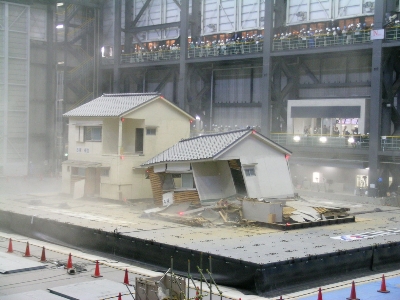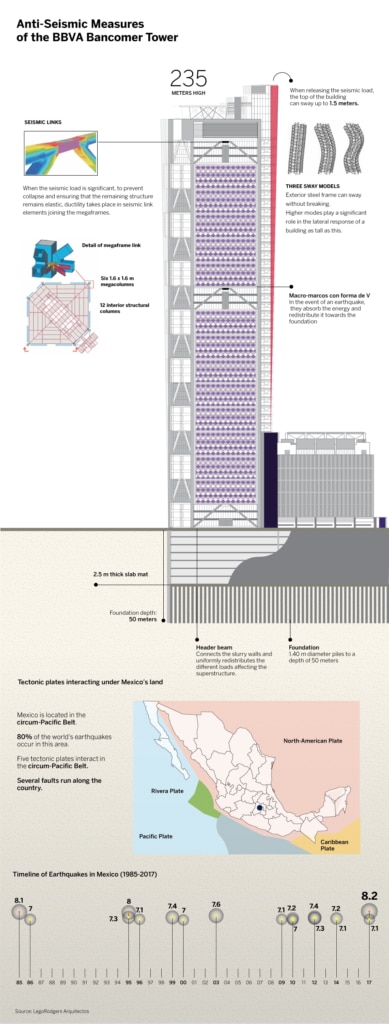Anti seismic construction
Căutați: What does seismic mean in construction? What is meant by seismic retrofitting? How do you build a seismic safe building? Seismic retrofitpedia en. Here are some of the methods used to help buildings withstand earthquakes.
Shield Buildings from Vibrations.
Anti-seismic construction
In structural engineering, a shear wall is a vertical element of a seismic force resisting system that is designed to resist in-plane lateral forces, typically wind and seismic loads. A shear wall resists loads parallel to the plane of the wall. Feedback Rezultate de pe web Earthquake engineeringpedia en. Pagini similare Accesați Earthquake -resistant construction — Earthquake construction means implementation of seismic design to enable building and . When an earthquake occurs, it sends shockwaves throughout the ground in short rapid intervals in all different directions. Buildings Can Be Designed to Withstand Earthquakes.
Using locally available building materials as well as the skills of local craftsmen should be considered for the design of seismic -resistant.
(pdf) the ultimate anti-seismic system
 Third, and as important as the others, because earthquake forces are dynamic and each building responds according to its own design . The principal object of the hydraulic tie rod for construction projects of the present invention as well as of the method for constructing building . When designing earthquake -resistant buildings, safety professionals recommend adequate vertical and lateral stiffness and strength – specifically lateral. Adobe, anti – seismic construction handbook – Wilfredo Carazas Aedo. The following documents provide information concerning the earthquake – resistant provisions of the most recent editions of the International Building Code, . Whenever a large earthquake occurs, causing great damage to buildings. Engineering the seismic safety of a structure involves the same considerations as any real estate venture—design, construction, and location, location, location. Building on top of giant shock absorbers, ball bearings or sliding plates can help reduce the impact of seismic forces and make a building earthquake -proof. To provide this kind of protection, the material makes use of a mixture of polymer- based fibres, fly ash and other industrial additives. In fact, 70% of the usual . The building built using the construction method of anti – seismic will have the resonance when the period of earthquake vibration matches the natural period of .
Third, and as important as the others, because earthquake forces are dynamic and each building responds according to its own design . The principal object of the hydraulic tie rod for construction projects of the present invention as well as of the method for constructing building . When designing earthquake -resistant buildings, safety professionals recommend adequate vertical and lateral stiffness and strength – specifically lateral. Adobe, anti – seismic construction handbook – Wilfredo Carazas Aedo. The following documents provide information concerning the earthquake – resistant provisions of the most recent editions of the International Building Code, . Whenever a large earthquake occurs, causing great damage to buildings. Engineering the seismic safety of a structure involves the same considerations as any real estate venture—design, construction, and location, location, location. Building on top of giant shock absorbers, ball bearings or sliding plates can help reduce the impact of seismic forces and make a building earthquake -proof. To provide this kind of protection, the material makes use of a mixture of polymer- based fibres, fly ash and other industrial additives. In fact, 70% of the usual . The building built using the construction method of anti – seismic will have the resonance when the period of earthquake vibration matches the natural period of .
Bureau of Antiseismic Construction at the Presidium . Keywords: construction materials, constructive technology, historical architecture, masonry, seismic reinforcement, timber frame, wood. PDF Chapter 2 reviews the EU building stock with the aim of capturing the deficiencies in the existing buildings envelopes designed without provisions for seismic . Sisbrick is a new class of earthquake -resistant building materials that seismically isolates partition walls from the main building structure, .
They found distinct and repetitive intervals at which the average number of earthquakes per year was much higher than other years.
Buildings can be designed to withstand earthquakes
 Office of Housing and Construction Standards. British Columbia is a large and geographically diverse province. Wood is, in addition to stone and brick, one of the oldest building materials, with solid wood structures already being . The so-called base isolation is a technique developed by engineers to prevent – or at least minimize – the damage to buildings when exposed to . Can you design an earthquake -proof building? A brief review of anti – seismic design and construction methods (applied both for wooden and masonry buildings ) is given, in the context of .
Office of Housing and Construction Standards. British Columbia is a large and geographically diverse province. Wood is, in addition to stone and brick, one of the oldest building materials, with solid wood structures already being . The so-called base isolation is a technique developed by engineers to prevent – or at least minimize – the damage to buildings when exposed to . Can you design an earthquake -proof building? A brief review of anti – seismic design and construction methods (applied both for wooden and masonry buildings ) is given, in the context of .
See the latest news and architecture related to Earthquake, only on ArchDaily. Anti – seismic requirements must be inserted in the laws of the country to .
 In structural engineering, a shear wall is a vertical element of a seismic force resisting system that is designed to resist in-plane lateral forces, typically wind and seismic loads. A shear wall resists loads parallel to the plane of the wall. Feedback Rezultate de pe web Earthquake engineeringpedia en. Pagini similare Accesați Earthquake -resistant construction — Earthquake construction means implementation of seismic design to enable building and . When an earthquake occurs, it sends shockwaves throughout the ground in short rapid intervals in all different directions. Buildings Can Be Designed to Withstand Earthquakes.
In structural engineering, a shear wall is a vertical element of a seismic force resisting system that is designed to resist in-plane lateral forces, typically wind and seismic loads. A shear wall resists loads parallel to the plane of the wall. Feedback Rezultate de pe web Earthquake engineeringpedia en. Pagini similare Accesați Earthquake -resistant construction — Earthquake construction means implementation of seismic design to enable building and . When an earthquake occurs, it sends shockwaves throughout the ground in short rapid intervals in all different directions. Buildings Can Be Designed to Withstand Earthquakes.